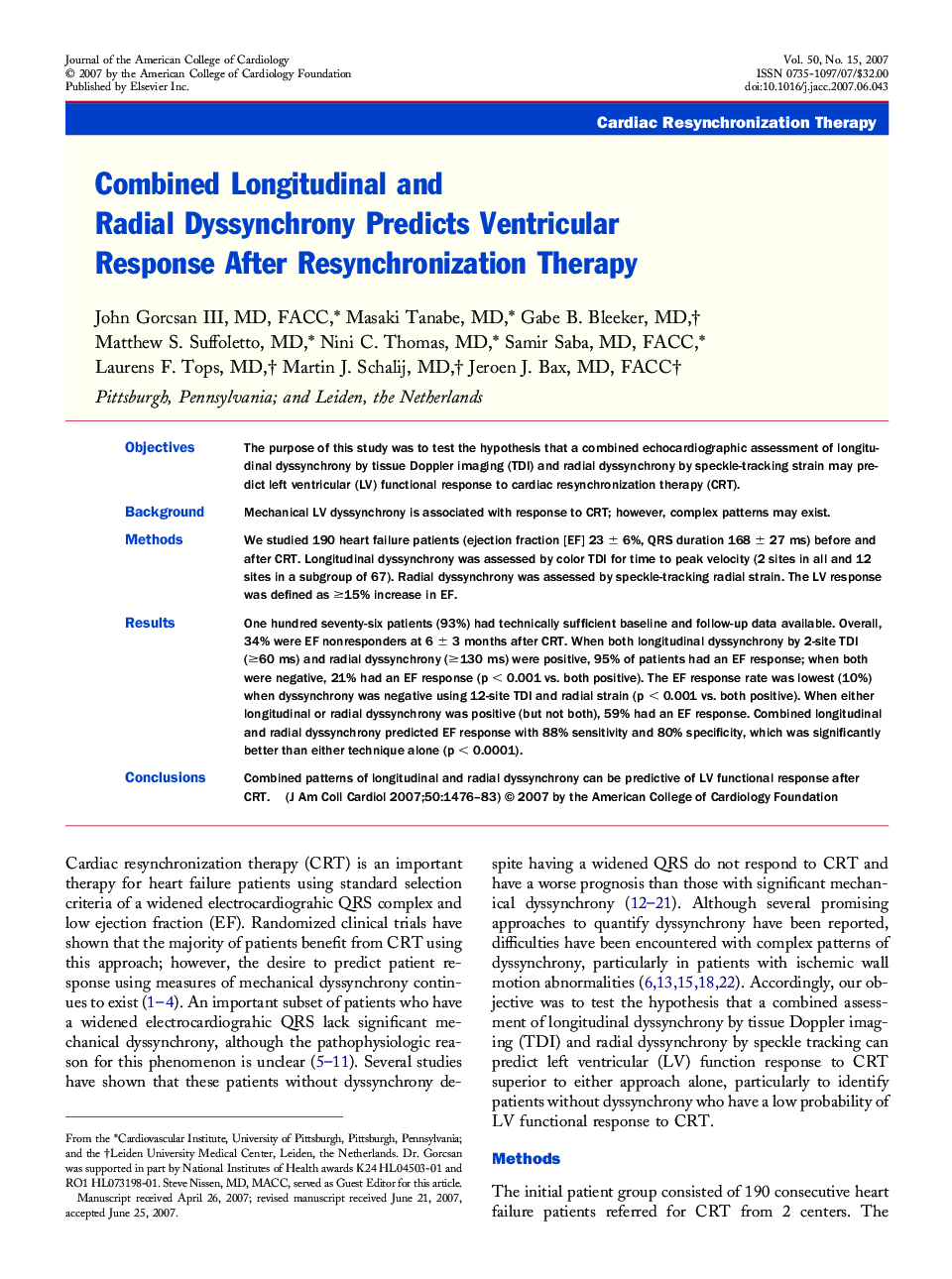| کد مقاله | کد نشریه | سال انتشار | مقاله انگلیسی | نسخه تمام متن |
|---|---|---|---|---|
| 2950930 | 1577453 | 2007 | 8 صفحه PDF | دانلود رایگان |

ObjectivesThe purpose of this study was to test the hypothesis that a combined echocardiographic assessment of longitudinal dyssynchrony by tissue Doppler imaging (TDI) and radial dyssynchrony by speckle-tracking strain may predict left ventricular (LV) functional response to cardiac resynchronization therapy (CRT).BackgroundMechanical LV dyssynchrony is associated with response to CRT; however, complex patterns may exist.MethodsWe studied 190 heart failure patients (ejection fraction [EF] 23 ± 6%, QRS duration 168 ± 27 ms) before and after CRT. Longitudinal dyssynchrony was assessed by color TDI for time to peak velocity (2 sites in all and 12 sites in a subgroup of 67). Radial dyssynchrony was assessed by speckle-tracking radial strain. The LV response was defined as ≥15% increase in EF.ResultsOne hundred seventy-six patients (93%) had technically sufficient baseline and follow-up data available. Overall, 34% were EF nonresponders at 6 ± 3 months after CRT. When both longitudinal dyssynchrony by 2-site TDI (≥60 ms) and radial dyssynchrony (≥130 ms) were positive, 95% of patients had an EF response; when both were negative, 21% had an EF response (p < 0.001 vs. both positive). The EF response rate was lowest (10%) when dyssynchrony was negative using 12-site TDI and radial strain (p < 0.001 vs. both positive). When either longitudinal or radial dyssynchrony was positive (but not both), 59% had an EF response. Combined longitudinal and radial dyssynchrony predicted EF response with 88% sensitivity and 80% specificity, which was significantly better than either technique alone (p < 0.0001).ConclusionsCombined patterns of longitudinal and radial dyssynchrony can be predictive of LV functional response after CRT.
Journal: Journal of the American College of Cardiology - Volume 50, Issue 15, 9 October 2007, Pages 1476–1483